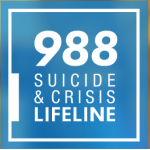The President’s Budget for Fiscal Year (FY) 2024 includes $10.8 billion for the Substance Abuse and Mental Health Services Administration (SAMHSA), $3.3 billion over the agency’s FY 2023 enacted budget. The FY 2024 budget proposal continues to support the President’s Unity Agenda to address the national mental health crisis and overdose epidemic.
With a multidimensional approach to addressing the nation’s behavioral health challenges, SAMHSA’s FY 2024 budget proposal includes a historic investment to transform America’s behavioral health crisis care system, with the expansion of the 988 Suicide & Crisis Lifeline; a mandatory proposal for Community Mental Health Centers (CMHCs) to increase access to high-quality, comprehensive mental health services in communities across the nation; and the request to Congress to change ‘Abuse’ to ‘Use’ in the Agency’s and Centers’ names, to reduce the historic stigma that too often has proven to be a barrier to seeking and receiving care.
“The Fiscal Year 2024 SAMHSA budget proposal contains critical, targeted investments to address America’s behavioral health needs and to increase access to quality care for individuals and families across the nation,” said Miriam E. Delphin-Rittmon, Ph.D., the Health and Human Services’ Assistant Secretary for Mental Health and Substance Use and the leader of SAMHSA. “This funding will further facilitate SAMHSA’s daily work to connect more people to proven prevention, treatment, and recovery services and supports.”
Targeted investments to improve the mental health and well-being of individuals and families across the country include:
- $1.7 billion, an increase of $645 million, for the Community Mental Health Services Block Grant. The two-year funding to states includes a 10 percent set-aside for evidence-based programs for individuals with early serious mental illness (SMI), including first-episode psychosis; a proposal to increase the crisis care set-aside from 5 to 10 percent; and a new 10 percent set-aside for evidence-based programs to support at-risk youth and adults.
- $413 million for Community Mental Health Centers (CMHCs) operated by state and local governments, as well as nonprofit organizations, to increase access to high-quality, comprehensive mental health services in communities across the nation. The budget proposal will further expand the range, quality, and capacity of services in CMHCs, building on the $825 million in funding directed to CMHCs in the Coronavirus Response and Relief Supplemental Appropriations.
- $553 million, an increase of $168 million, for Certified Community Behavioral Health Clinics (CCBHCs). The funding would further increase access to and coordination of care to enable individuals to receive timely diagnosis, treatment, and recovery support services. The budget proposal also includes a request for authority to develop a process for accrediting CCBHCs.
- $836 million, an increase of $334 million, to the 988 Suicide & Crisis Lifeline. From July to December 2022, the 988 Lifeline answered more than 2.1 million contacts. The requested funds, to be dispersed to states, local crisis centers, tribes and tribal organizations, and the system administrator, would scale and strengthen the 988 crisis care operation to respond to the 9 million contacts anticipated in FY 2024.
- $244 million, an increase of $104 million, for Project Advancing Wellness and Resiliency in Education (AWARE), which identifies children and youth in need of mental health services in their schools. Since the COVID-19 pandemic began, anxiety, depression, loneliness, and negative emotions and behaviors have increased among young people—with many saying they have considered or attempted suicide. In FY 2024, SAMHSA projects these funds will help to identify and refer approximately 120,000 school-aged youth to mental health and related services.
- $102.9 million, an increase of $47 million, for Primary and Behavioral Health Care Integration, which expands the infrastructure and increases the availability of primary health care and wellness services for individuals with SMI or co-occurring mental illness and drug/alcohol addiction. This is particularly crucial because many Americans see their primary care physicians about behavioral health needs before seeing behavioral health care providers. In FY 2022, this effort trained 62,806 individuals in the mental health and related workforce.
Investments focused on keeping people who use drugs alive and increasing access to prevention, treatment, and recovery services and supports for individuals with substance use disorders include:
- $2 billion, an increase of $425 million, for the State Opioid Response (SOR) grant program, which disperses funding to states and territories to address the public health crisis caused by escalating opioid misuse and substance use disorder across the nation. Of the $2 billion, $75 million would go to the corresponding Tribal Opioid Response (TOR) grant program. Since the SOR program began, approximately 1.2 million patients have received treatment services, including more than a half-million who have received an FDA-approved medication for opioid use disorder. The budget increase would enhance states’ ability to address stimulants (such as methamphetamine and cocaine), as well as other issues related to the overdose epidemic.
- $2.7 billion, an increase of $700 million, for the Substance Use Prevention, Treatment and Recovery Support Block Grant. With an updated name that sheds stigmatizing language, the block grant works to ensure that individuals, their families, and communities across the country have access to substance use-related prevention, treatment, harm reduction, and recovery support services necessary to improve individual outcomes and reduce the impact of substance misuse. The budget proposal includes a request for a 10 percent set-aside for recovery support services to significantly expand the continuum of care. FY 2022 block grant funding has connected more than 205,000 people to withdrawal management services; more than 329,000 people to residential treatment levels of care; 883,000 people to ambulatory services; and 343,000 people to outpatient treatment that included medications for opioid use disorder.
- $50 million to Community Harm Reduction and Engagement Initiatives, a new program that would fund state, local and territory governments, as well as tribal and nongovernmental efforts to address the gap in substance use care by supporting broad-based community harm reduction activities and linkages to services. The program would reach approximately 330,000 people with harm reduction and low-threshold treatment services through resources for community-based organizations, community harm reduction and engagement expansion grants, and a technical assistance center.
The budget also seeks to update SAMHSA’s and its centers’ names to remove the stigmatizing label of “substance abuse,” a change that requires Congressional action. View the SAMHSA budget proposal (PDF | 8.6 MB).
Americans seeking treatment for mental health or substance use issues should call SAMHSA’s National Helpline at 800-662-HELP (4357) or visit findtreatment.samhsa.gov. If you or someone you know is struggling or in crisis, help is available. Call or text 988 or chat 988lifeline.org.






